立命館大学 薬学部 細胞工学研究室のホームページ
Project
2.琵琶湖固有種の保存と幹細胞生物学
生殖細胞(卵子、精子)は我々の身体を構成する体細胞とは異なり、次世代へ遺伝情報を混合し、伝達するという目的のために分化した特殊な細胞です。生殖細胞は発生の極めて初期にその運命決定がなされ、体細胞とは異なる特有の減数分裂により形成されます。この過程で遺伝情報は染色体の組換えと組合せにより多様性を獲得します。こうして生殖細胞にゆだねられた遺伝情報は有性生殖により新たな世代をつくりだしてゆきます。
琵琶湖は世界有数の古代湖であり、約50種の貴重な固有種が生息していますが、現在その多くが絶滅の危機にあります。特に琵琶湖固有種は、貴重な食糧資源として利用されてきたことから、独特の地域の食文化を形成しています。すなわち琵琶湖固有種の損失は生物資源のみならず地域食文化の喪失にもつながります。
そこで地域の貴重な生物資源保護と固有種の細胞生物学の観点から琵琶湖固有種(ホンモロコ)の細胞株樹立、生殖細胞の保存とin vitro分化、さらにそれらを用いたバイオセンサー構築を試みています。このプロジェクトは、生物および食糧資源として貴重でありながら、細胞生物研究について報告のほとんどない琵琶湖固有種に関する学術的空白領域を埋めると共に、細胞レベルの知見と固有種、自然環境保全、地域文化を統合し、地域に貢献することを目指しています。
最近、ホンモロコの細胞株を用いて、環境水中のホルモン様物質を検出する「バイオセンサー」を構築し、殺虫剤等に含まれる化学物質のノニルフェノールが雄性ホルモンを抑制することを見出しました。
また凍結保存したホンモロコの精原細胞から受精能を持つ精子を作り出す、in vitro精子分化培養系を確立し、現在、卵子作製に取り組んでいます。また生殖細胞特異的にGFPを発現するトランスジェニックやゲノム編集によるKOホンモロコも作製し、個体レベルでの生殖細胞分化研究も展開しています。

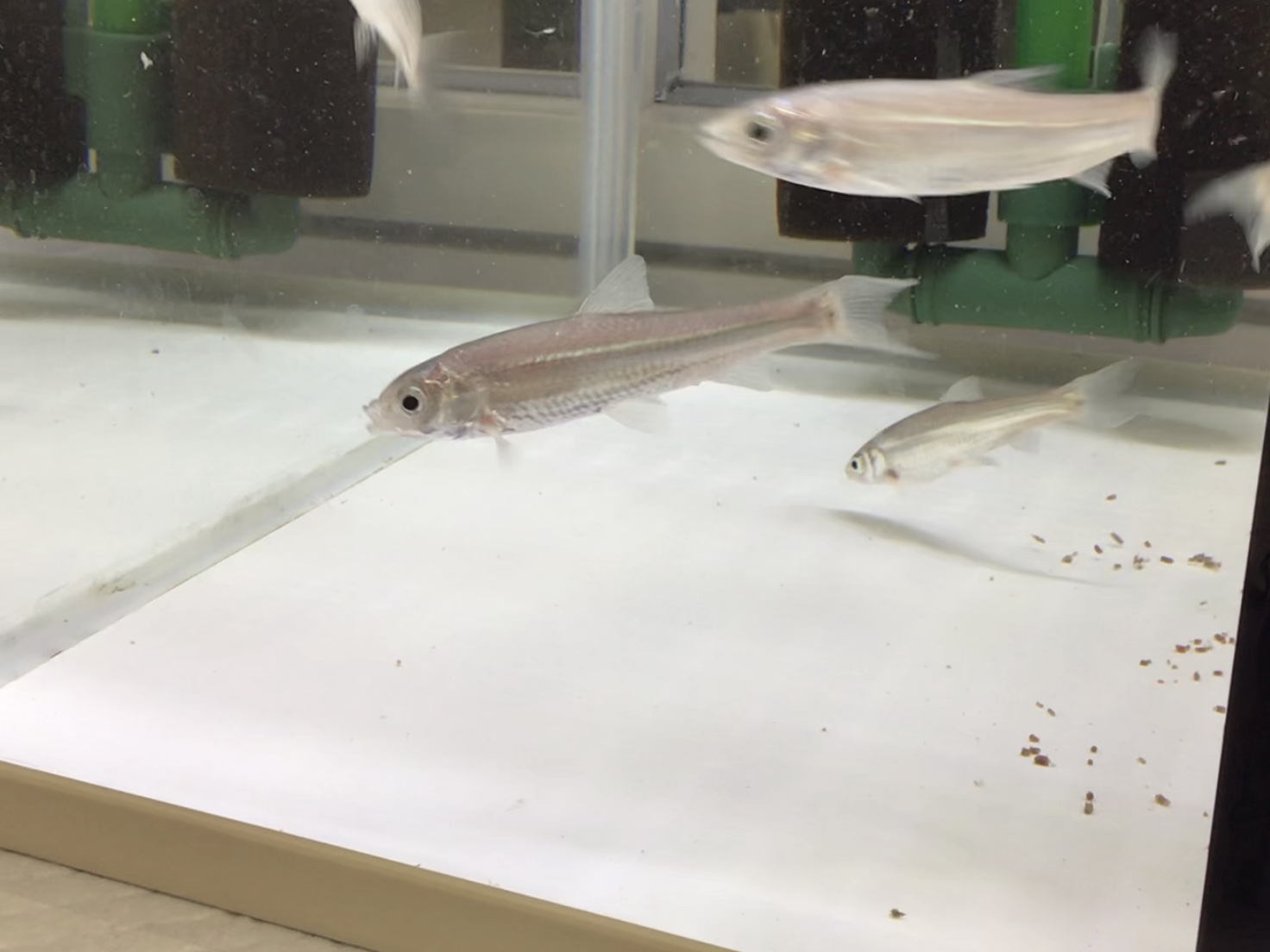
Endemic fish in Lake-Biwa: Gnathopogon caerurescens

In vitro differentiation of spermatognial stem cells to functional sperm (Video)

A strategy to preserve endemic species in Lake-Biwa: Cryopreservation of undifferentiated germ stem cell, differentiation into sperm and egg in vitro, fish production by artificial insemination
関連論文
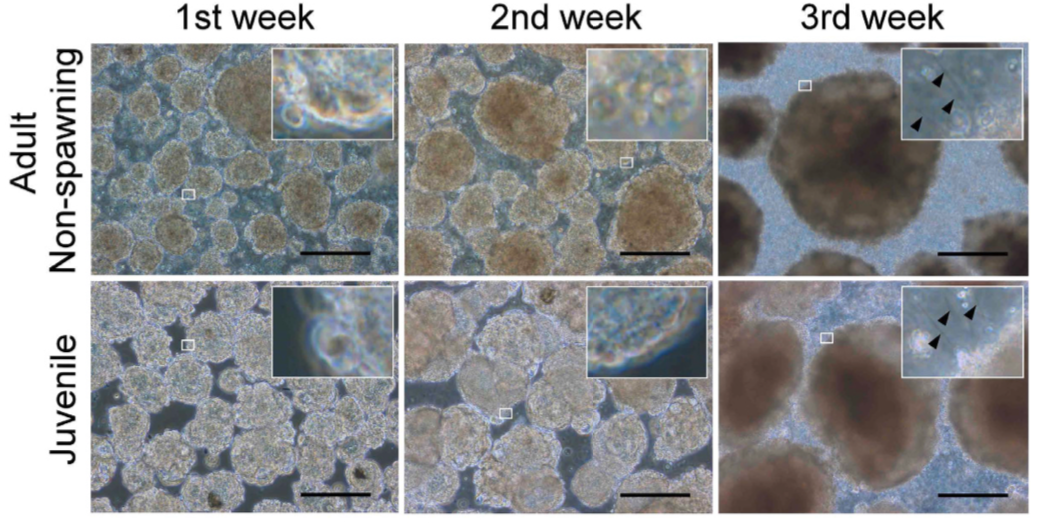
In vitro differentiation of fertile sperm from cryopreserved spermatogonia of the endangered endemic cyprinid honmoroko (Gnathopogon caerulescens)
We succeeded the in vitro differentiation of fertile sperm from cryopreserved spermatogonia isolated from juveniles of the endangered small cyprinid honmoroko (Gnathopogon caerulescens), which is endemic to Lake Biwa in Japan
Scientific Reports 2017DOI:10.1038/srep42852
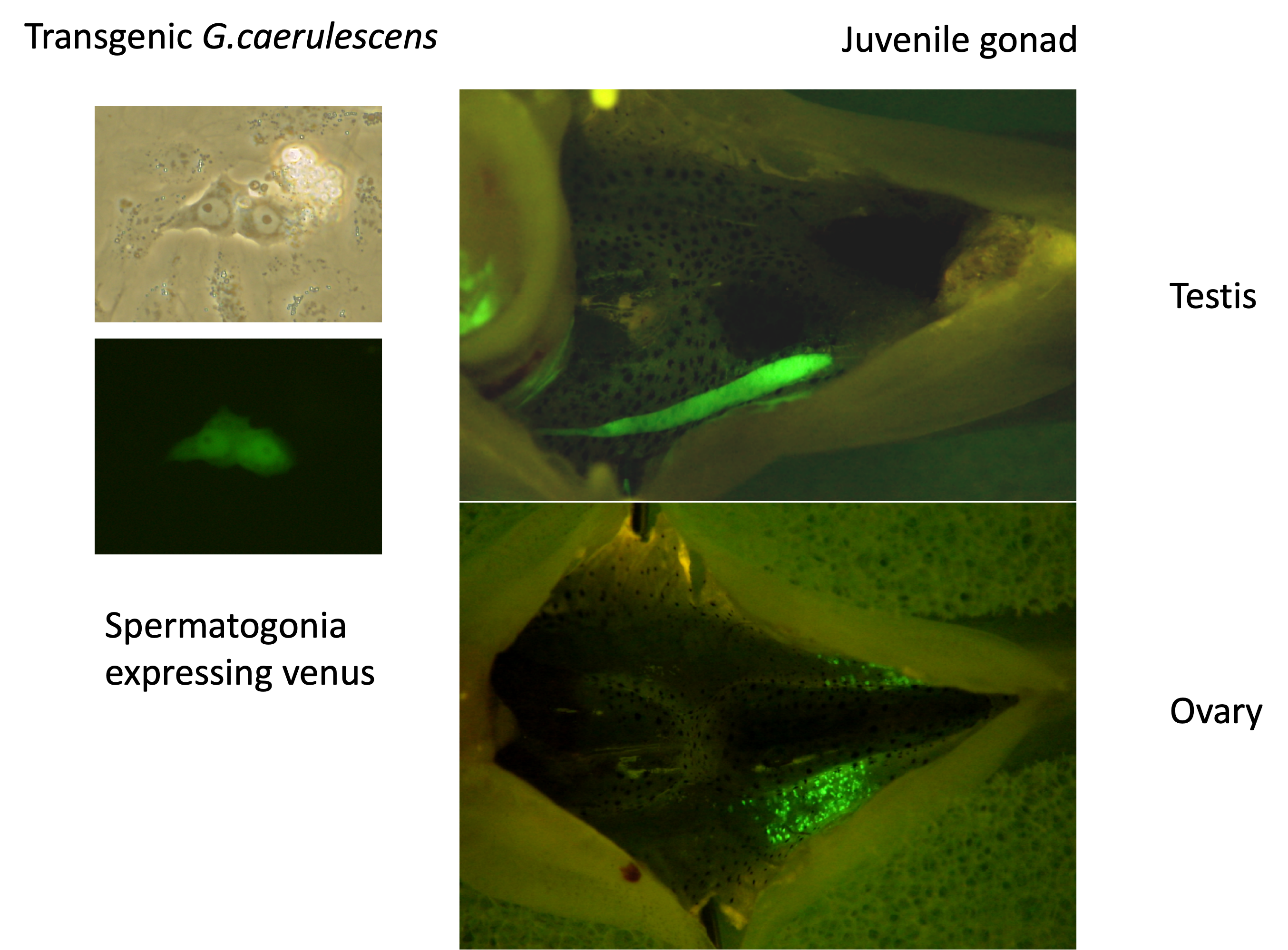
Germ cell–specific expression of Venus by Tol2-mediated transgenesis in endangered endemic cyprinid Honmoroko (Gnathopogon caerulescens)
J. Fish Biol. 2021DOI: 10.1111/jfb.14840
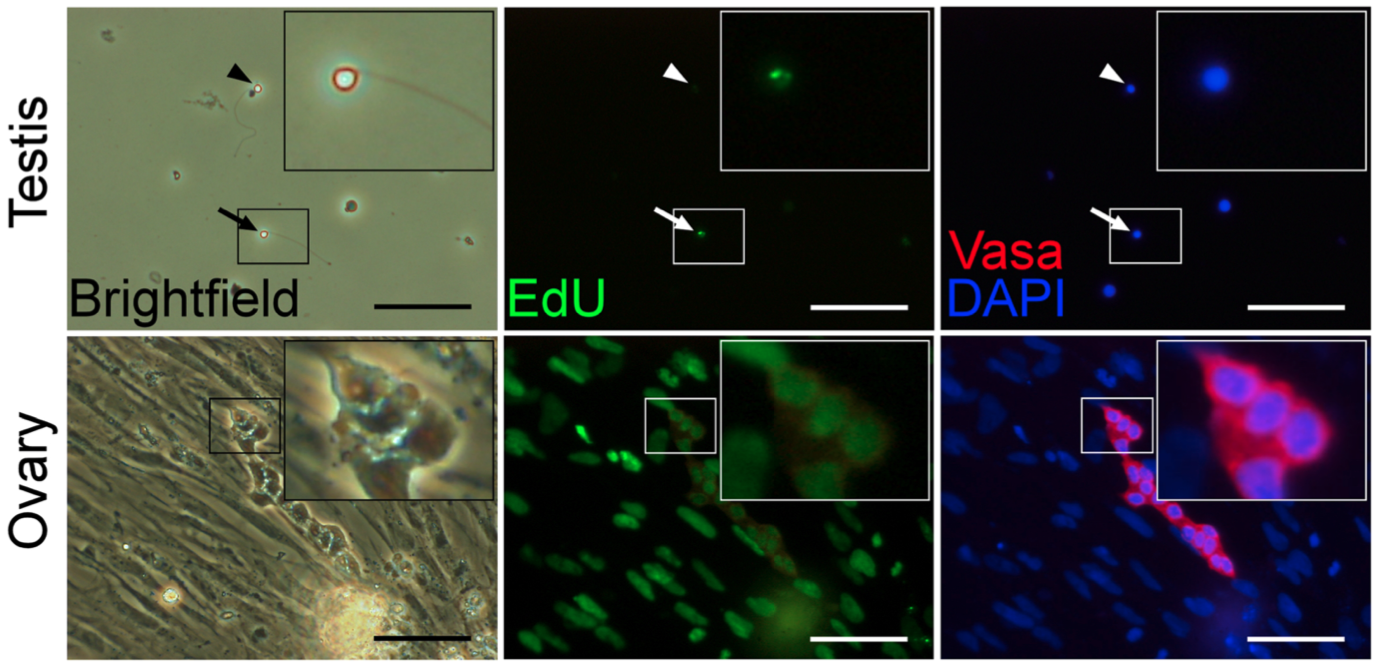
Cryopreservation of male and female gonial cells by vitrification in the critically endangered cyprinid honmoroko Gnathopogon caerulescens
We reported an efficient cryopreservation method for spermatogonia and oogonia in the critically endangered cyprinid honmoroko Gnathopogon caerulescens using rapid-cooling (vitrification) methods
Fish Physiol Biochem 2018DOI: 10.1007/s10695-017-0449-x
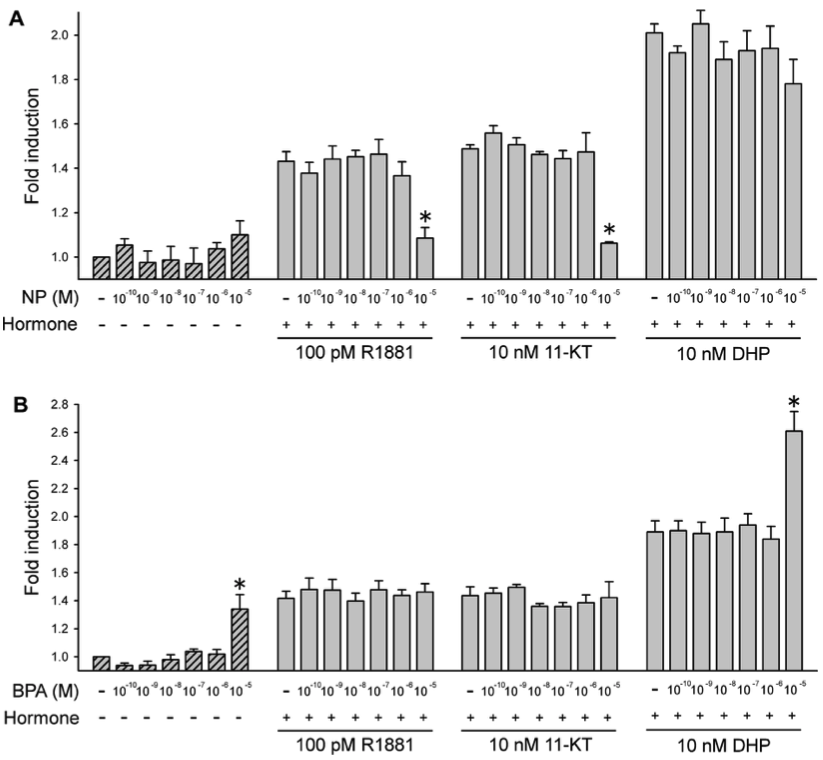
Response to fish specific reproductive hormones and endocrine disrupting chemicals of a Sertoli cell line expressing endogenous receptors from an endemic cyprinid Gnathopogon caerulescens
We established an epithelium-like cell line RME1 from the blastula-stage embryos of the critically endangered cyprinid Honmoroko (Gnathopogon caerulescens), which is endemic to ancient Lake Biwa in Japan.
Gen Comp Endocrinol 2013DOI: 10.1016/j.ygcen.2013.06. 002
